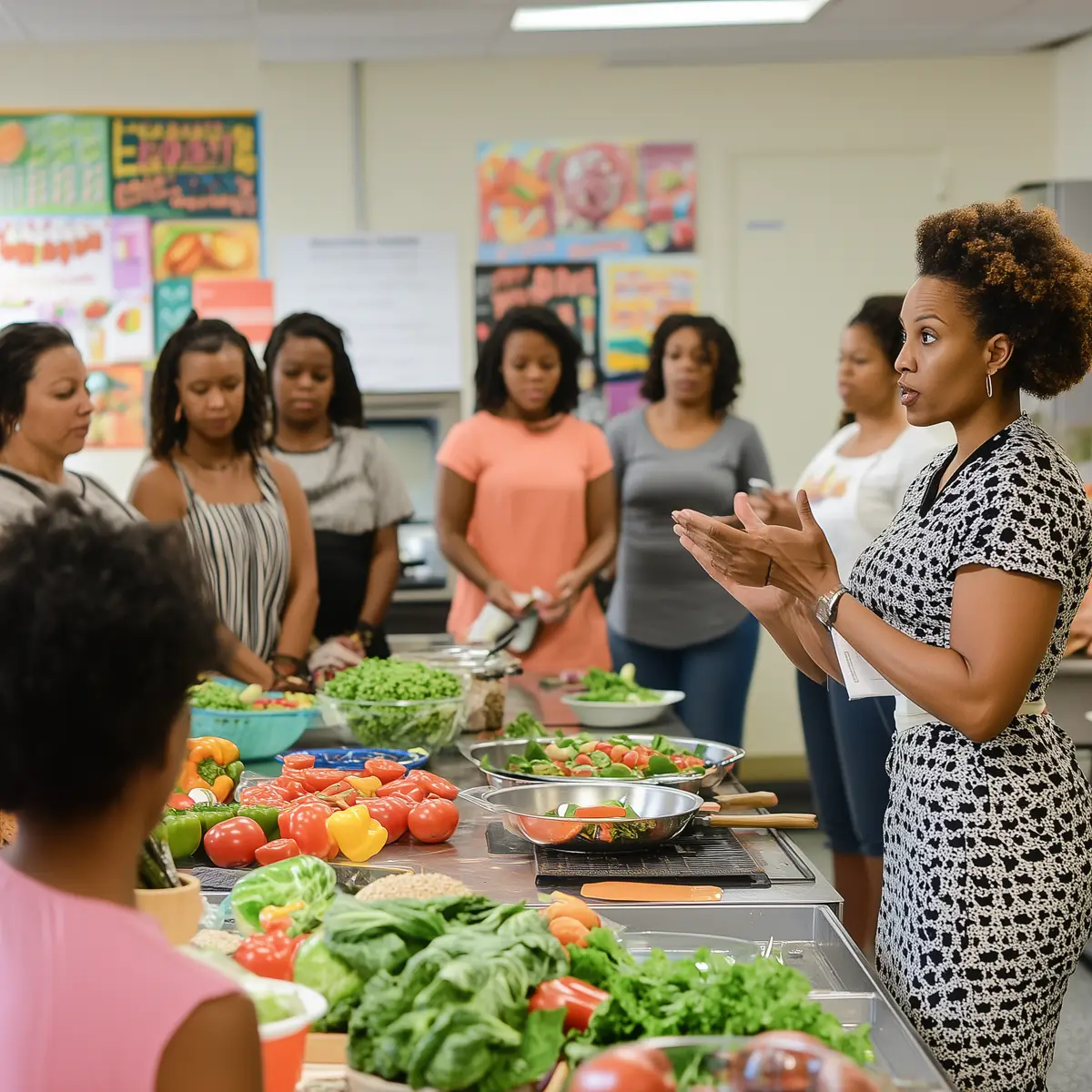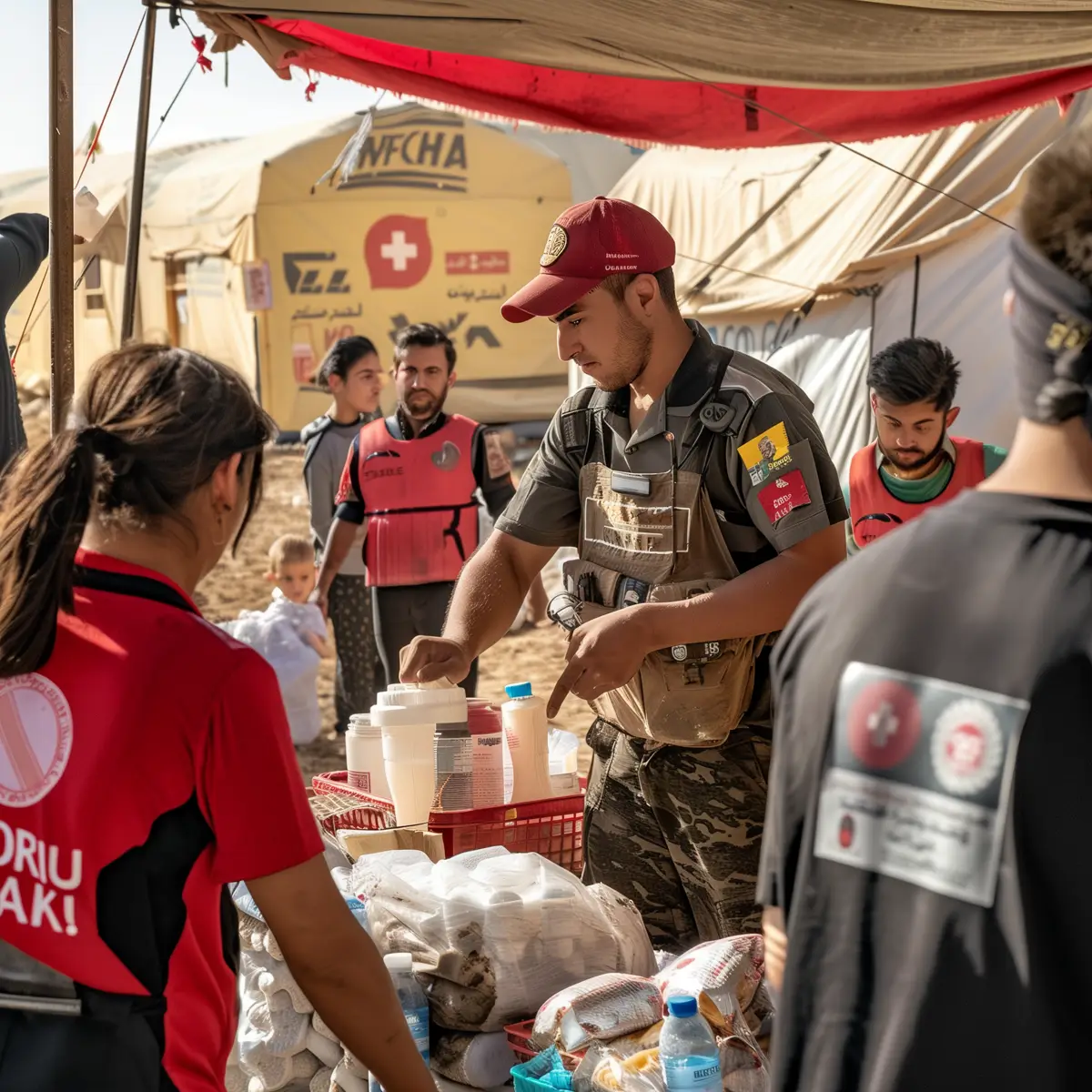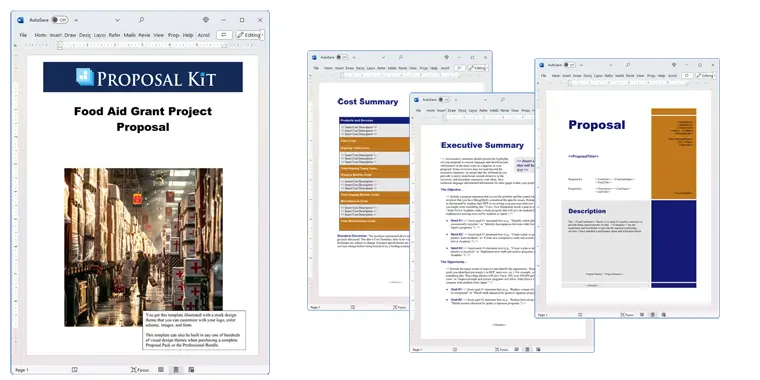How to write your Food Aid Grant Project Proposal
We include this 38 page layout with every Proposal Pack. If you want this template to have a different visual design theme than the one illustrated here, purchase any Proposal Pack design and create this template using the purchased design theme. This template is included in every Proposal Pack. If you get a Proposal Pack or the Professional Bundle, you can also make any variation of this template with different chapters to suit your needs.
We typically include more chapters in the templates than most people will need to give everyone more variety in the chapters they may need. You can trim down a long template by removing pages you do not need or combining multiple chapter topics into one page.
 DOWNLOADABLE, ONE-TIME COST, NO SUBSCRIPTION FEES
DOWNLOADABLE, ONE-TIME COST, NO SUBSCRIPTION FEES If you need this template on DVD media order from our Amazon shop.
If you need this template on DVD media order from our Amazon shop.
You can also create countless variations of this document to suit your needs using the included library of 2200+ chapters if ordering a Proposal Pack or Pro Bundle.
 What Our Clients Say
What Our Clients SayI’ve been using the Proposal Pack for a number of years and its worth taking the time to set it up as you get your investment back in multiple ways. I was out of budget when I purchased this but so glad I made the investment. Thanks."
Director of New Business Development
Neilson Marketing Services
Related Article
Related Video
Related Templates
- Non-profit Community Healthcare Program Proposal
- Nutritional Improvement Pilot Program Proposal
- Humanitarian Aid Services Support Proposal
- Sanitary Transportation Food Safety Proposal
- Drone Delivery of Supplies in Disaster Area Proposal
- Disaster Relief and Recovery Proposal
- USDA Federal Government Grant Proposal
- Food Processing and Storage Services Proposal
- Grant Funding Request Proposal
- Supply Chain Disruption and Risk Report
What's the Best Way to Write Your Food Aid Grant Project Proposal?
A proven way to write your food aid grant project proposal is by using the Proposal Kit template and software package. This comprehensive solution simplifies the process, guiding you step-by-step to create a professional and persuasive proposal that meets the requirements of the grant RFP. Proposal Kit incorporates a line item quoting database system for cost summaries, quotes, estimates, budgets, and other financial topics, making the process more manageable even for those without experience.
Are you in a position where you need to write a food aid grant project proposal but need help knowing where to start? Do you feel overwhelmed by the complexity of creating a professional proposal that meets all the grant requirements? Proposal Kit is here to help.
What Types of Projects Are Food Aid Grant Proposals Written For?
Food aid grant projects can encompass many initiatives. Here are examples of such projects:
- Applying for food aid grants from governmental agencies.
- Seeking funding from non-profit organizations focused on hunger relief.
- Building a case for corporate sponsorship of food aid programs.
- Partnering with international aid agencies for food distribution projects.
- Developing regional food security programs.
- Supporting disaster relief efforts with food aid.
- Launching community nutrition programs.
- Creating proposals for school meal funding.
- Applying for funding for agricultural development projects to enhance local food supplies.
- Establishing food banks or community kitchens.
- Seeking grants for health and wellness programs related to nutrition.
- Expanding existing food aid programs.
- Addressing food deserts in urban areas.
- Supporting rural development with food aid initiatives.
- Writing proposals for food-related research grants.
- Securing funds for emergency food assistance programs.
Chapters this template is built with
There is no one-size-fits-all template for a food aid grant project proposal. However, Proposal Kit offers a comprehensive library of templates that can be customized to suit your specific needs. Here are some key components you can include.
This list of chapter templates is just a small selection of the thousands available in the Proposal Kit's template library. You can customize your proposal to cover all the topics you need to discuss.
Cover Letter
The cover letter is your first impression. Use this section to introduce yourself, your organization, and the purpose of your proposal. Explain why you are the best choice for the project, highlighting any relevant experience and your commitment to addressing food insecurity. Specifically, mention any past successes in similar projects, partnerships with key organizations, and your team's expertise in managing food aid programs effectively.
Introduction
Provide a brief overview of your organization and the project you are proposing. Outline the problem you aim to solve and why it is essential. For a food aid grant project, explain the specific food insecurity issues in the target area, the impact of these issues on the community, and the urgency of addressing them. Highlight your organization's mission and how this project aligns with your goals.
Executive Summary
Summarize your proposal's key points, including the objectives, methods, expected outcomes, and budget. This section should give the grant reviewers a clear understanding of your project. Detail how your project will address food insecurity, the number of beneficiaries, and the measurable impacts you anticipate. Include a brief financial overview to demonstrate cost-effectiveness and transparency.
Expected Results
Detail the expected outcomes of your project. Explain how you will measure success and your project's impact on the target population. Specify quantitative and qualitative metrics, such as the number of meals provided, improvement in nutritional status, and community feedback. Outline the tools and methodologies you will use to track progress and achieve your goals.
Transportation
Describe how you will handle the logistics of transporting food to the distribution sites. Include details on transportation methods, routes, and partnerships with logistics providers. Discuss any challenges you foresee and your strategies for overcoming them, such as ensuring timely deliveries and maintaining food safety standards during transit.
Management
Explain your project management structure. Identify the key personnel involved and their roles and responsibilities. Detail the experience and qualifications of your management team, and describe how they will coordinate with volunteers, suppliers, and community partners to ensure smooth project execution.
Storage
Detail your plans for storing the food. Include information on storage facilities, equipment, and protocols to ensure food safety and quality. Describe the location and capacity of your storage facilities, temperature control measures, and procedures for inventory management to prevent spoilage and waste.
Service Area
Define the geographic area your project will serve. Provide demographic and socioeconomic information about the target population. Highlight the specific communities that will benefit from your project and explain why these areas were chosen based on their food insecurity levels and needs.
Reporting
Outline your reporting requirements and how you will inform stakeholders about the project's progress. Include details on data collection, analysis, and reporting frequency. Specify the types of reports you will generate, such as monthly progress updates, financial statements, and final impact assessments, to ensure accountability and transparency.
Responsibilities
Specify the responsibilities of all parties involved in the project. Clarify roles to ensure accountability and smooth collaboration. List the tasks assigned to each team member, partner organizations, and volunteers, and describe the coordination mechanisms to manage their efforts effectively.
Time Line
Provide a detailed timeline for the project. Include key milestones, deadlines, and the expected completion date. Break down the project phases, such as planning, procurement, distribution, and evaluation, and allocate sufficient time for each stage to ensure successful implementation.
Regulations
Discuss any regulatory requirements your project must comply with. Explain how you will ensure adherence to these regulations. Include information on food safety laws, transportation regulations, and any necessary permits or certifications your organization will obtain to operate legally and safely.
Commodities
List the types of food and other commodities you will distribute. Explain how you will source, package, and distribute these items. Detail your selection criteria for nutritious and culturally appropriate foods, your partnerships with suppliers, and the packaging methods used to preserve food quality and safety.
Health and Wellness
Highlight how your project will promote health and wellness. Include information on nutrition education, dietary guidelines, and support services. Describe your plans for providing educational materials, workshops, and resources to help beneficiaries make healthier food choices and improve their overall well-being.
Nutrition
Detail the nutritional standards your project will follow. Explain how you will ensure that the food provided meets these standards. Include information on dietary guidelines you will adhere to, methods for assessing the nutritional value of food packages, and strategies for addressing the specific dietary needs of the target population.
Evaluation
Describe your evaluation plan. Explain how you will assess the effectiveness of your project and make improvements as needed. Outline the metrics and evaluation tools you will use, such as surveys, interviews, and health assessments, to measure the impact of your project and identify areas for improvement.
Aid Package
Outline the contents of the food aid packages. Include information on portion sizes, nutritional value, and additional support materials. Describe how the packages are tailored to meet the needs of the beneficiaries, ensuring they provide balanced nutrition and cater to dietary restrictions or cultural preferences.
Budget
Provide a detailed budget for the project. Include itemized costs for all aspects of the project to ensure transparency and accountability. Break down the budget into food procurement, transportation, storage, personnel, and administrative expenses, and justify each cost with detailed explanations.
Cost Effectiveness
Explain how your project offers a cost-effective solution to the problem of food insecurity. Include comparisons with similar projects and highlight any cost-saving measures. Discuss your strategies for maximizing resource utilization, leveraging partnerships, and achieving high impact with minimal expenses.
Summary
Summarize the main points of your proposal. Reinforce your commitment to the project and the benefits it will bring to the community. Emphasize the importance of addressing food insecurity and how your project's innovative approach, strong management, and measurable outcomes will make a significant difference.
Qualifications
Detail your organization's and key personnel's qualifications. Highlight any relevant experience and expertise. Include information on past successful projects, certifications, and specialized skills that make your team well-suited to execute the proposed project effectively.
Company History
Provide a brief history of your organization. Include information on your mission, values, and past achievements. Highlight significant milestones, awards, and recognitions demonstrating your credibility and longstanding commitment to combating food insecurity.
Company Operations
Describe your organization's operations. Include information on your facilities, staff, and operational procedures. Explain how your organizational structure, workflows, and management practices ensure efficient and effective project implementation.
Programs and Activities
Detail any other programs and activities your organization is involved in. Highlight how these programs complement the proposed project. Discuss the synergies between different initiatives and how they collectively contribute to your mission of addressing food insecurity and promoting community well-being.
Distribution
Explain how you will distribute the food. Include details on distribution sites, schedules, and methods. Describe your strategies for reaching the target population, ensuring equitable access, and minimizing distribution challenges such as logistical barriers and transportation costs.
References
Include references from past clients or partners. Positive feedback can build trust and credibility with the grant reviewers. Provide testimonials that speak to your organization's reliability, impact, and ability to successfully manage large-scale food aid projects.
Beneficiaries
Describe the beneficiaries of your project. Include demographic information and how they will benefit from the project. Provide detailed profiles of the target population, highlighting their needs, challenges, and how your project will improve their food security and overall quality of life.
Personnel
List the key personnel involved in the project. Include their qualifications, roles, and responsibilities. Provide brief bios and relevant experience of each team member to demonstrate their ability to manage and execute the project successfully.
Geographic Information
Provide geographic information about the area you will serve. Include maps, demographic data, and any relevant statistics. Highlight specific regions or communities where your project will have the most impact and explain why these areas were chosen.
Related Projects
Detail any related projects your organization has undertaken. Highlight the success of these projects and how they relate to the proposed project. Discuss lessons learned and how previous experiences will inform and improve the implementation of the new project.
Tax Status
Include information on your organization's tax status. Provide proof of your tax-exempt status if applicable. Attach relevant documentation to verify your eligibility for tax benefits and grant funding.
Compliance Matrix
Provide a compliance matrix to show how your proposal meets the requirements of the grant RFP. List each RFP requirement and indicate where it is addressed in your proposal, ensuring reviewers can easily verify your compliance.
RFP Cross Reference
Include an RFP cross-reference to ensure that your proposal addresses all of the grant RFP's requirements. This section helps reviewers quickly locate relevant information and ensures no critical elements are overlooked.
Bid / No-Bid Checklist
Provide a bid / no-bid checklist to help you determine whether to pursue the grant opportunity. Include criteria such as alignment with your mission, resource availability, and potential impact to guide your decision-making process.
Grant Proposal Development Checklist
Include a grant proposal development checklist to ensure that all proposal components are completed. This checklist is a final review tool to verify that your proposal is comprehensive, well-organized, and ready for submission.
Use cases for this template
Jane's Emergency Food Aid Project
Jane, the owner of Global Relief Services, needed to secure a grant to supply emergency food aid to regions affected by a natural disaster. The grant was crucial to providing immediate relief to thousands of displaced individuals. Jane used Proposal Kit to create a detailed food aid grant project proposal, emphasizing her organization's experience in disaster relief, the effectiveness of their logistics network, and the impact of their previous projects.
Jane created a cover letter and a comprehensive project overview using the Proposal Kit templates. She highlighted her organization's qualifications, the expected results, and a detailed budget. Her proposal included high-quality visuals and data to support her case. The clarity and professionalism of Jane's proposal secured the necessary funding to deliver critical food aid to those in need.
Alex's School Meal Program Proposal
Alex, an employee at Healthy Futures, was tasked with applying for a grant to implement a school meal program in a low-income community. He faced a tight deadline and needed to produce a high-quality proposal quickly. Alex generated the content for specific chapters using the Proposal Kit and an AI writing tool by analyzing his company's website. The AI tool helped him draft sections like the executive summary and budget, saving valuable time.
Alex's proposal included:
- A detailed introduction to Healthy Futures.
- A clear outline of the project's objectives.
- A comprehensive implementation plan.
The professionalism and detail in Alex's proposal impressed his superiors and the grant reviewers, leading to the successful acquisition of the grant. This funding enabled Healthy Futures to provide nutritious meals to hundreds of schoolchildren, improving their health and academic performance.
Laura's Community Garden Initiative
Laura, a director at Green Hands, a non-profit organization, needed to write an RFP for companies to bid on supporting a community garden initiative. The project aimed to promote food self-sufficiency and nutrition education in urban neighborhoods. Laura used a Proposal Kit to create a detailed and compelling RFP outlining the project's goals, budget, and timeline.
Her RFP clearly described the community garden's benefits, expected outcomes, and the qualifications required from potential partners. Laura's professional and thorough RFP attracted multiple bids from qualified companies, allowing Green Hands to select the best partner to help implement their community garden project. The initiative fostered community engagement and provided fresh produce to local families.
Conclusions and Recommendations
In conclusion, using the Proposal Kit is the best way to write your food aid grant project proposal. The comprehensive templates and customizable options ensure that your proposal meets all the requirements of the grant RFP and presents your project in the best possible light.
Also Known As
This template may also be referred to in different ways or be used in more specialized situations, such as:
- Hunger relief proposal
- Food security grant
- Nutrition aid program
- Disaster food assistance
- Community food project
- Food bank funding
- Aid distribution plan
- Nutrition program grant
- Emergency food support
- Agricultural aid proposal
Abstract
 Creating a successful food aid grant project proposal is important in addressing food insecurity and supporting local food systems. This comprehensive plan intends to improve access to nutritious food by collaborating with agricultural producers and focusing on community resilience. During the grant period, potential funders and donors play an important role in enabling projects to address underlying causes of hunger while promoting sustainability and economic growth.
Creating a successful food aid grant project proposal is important in addressing food insecurity and supporting local food systems. This comprehensive plan intends to improve access to nutritious food by collaborating with agricultural producers and focusing on community resilience. During the grant period, potential funders and donors play an important role in enabling projects to address underlying causes of hunger while promoting sustainability and economic growth.
A well-written proposal ensures clarity by following guidelines provided and offering practical tips for submission. It highlights the project's priorities and details how it intends to engage women and other key stakeholders across the globe, encouraging their willingness to join and contribute their ideas.
The world faces numerous challenges requiring smart, time-bound solutions to enhance food security. This project emphasizes training and development to empower local communities, focusing on factors that influence food access and security. By submitting a proposal that aligns with the interests of stakeholders, the project can secure funding to implement impactful initiatives. Additional information and comprehensive strategies support the project's objectives, showcasing its ability to play an important role in addressing global food insecurity.
 The project intends to implement food security projects that address the pressing needs of vulnerable populations. By focusing on innovative strategies, the proposal aims to ensure clarity in its objectives and execution, making it accessible and understandable to a wide audience. The project is designed to be time-bound, offering measurable outcomes within a specified period, thus providing potential funders with confidence in its feasibility and impact.
The project intends to implement food security projects that address the pressing needs of vulnerable populations. By focusing on innovative strategies, the proposal aims to ensure clarity in its objectives and execution, making it accessible and understandable to a wide audience. The project is designed to be time-bound, offering measurable outcomes within a specified period, thus providing potential funders with confidence in its feasibility and impact.
Additional information included in the proposal offers a detailed roadmap of activities, timelines, and responsibilities, ensuring that each intended action aligns with the overall mission of enhancing food security. This comprehensive approach not only strengthens the proposal's appeal to stakeholders but also demonstrates a commitment to delivering tangible benefits that improve the quality of life for communities in need.
The project proposal is specifically designed to be time-bound, ensuring that all phases from planning to implementation are carefully scheduled to meet set deadlines, thus maximizing efficiency and impact. By adhering to a structured timeline, the initiative can swiftly address urgent food security challenges while maintaining flexibility to adapt as necessary. Additional information within the proposal includes a robust evaluation framework detailing the metrics and tools that will be used to assess progress and outcomes.
 This forward-thinking approach not only assures stakeholders of the project's commitment to transparency and accountability but also enhances its capacity to deliver sustainable solutions. By integrating these topics, the proposal highlights its readiness to tackle food insecurity head-on, promising a well-coordinated effort to empower local communities and foster long-term resilience.
This forward-thinking approach not only assures stakeholders of the project's commitment to transparency and accountability but also enhances its capacity to deliver sustainable solutions. By integrating these topics, the proposal highlights its readiness to tackle food insecurity head-on, promising a well-coordinated effort to empower local communities and foster long-term resilience.
Frequently Asked Questions
How do I start writing a food aid grant project proposal?
Use Proposal Kit's templates to guide you through the process. Start
with a cover letter and build your proposal using the customizable chapters provided.
What should I include in a grant proposal for food security?
Include details on your project's objectives, expected outcomes, budget, logistics, and your organization's qualifications.
How can I make my food aid grant project proposal stand out?
Use high-quality visuals, detailed descriptions, and supporting data to showcase your project's impact and feasibility. Start with a premade Proposal Kit design theme.
Can I customize the Proposal Kit templates?
Yes, Proposal Kit offers thousands of customizable templates to fit your needs.
How do I deliver my completed food aid grant project proposal?
Once you've finished editing your proposal, save it as a PDF format for delivery to ensure it looks professional and is easy to share.
15% Off Discount
![]() Add To Cart This Word Template Only
Add To Cart This Word Template Only
 Add To Cart Proposal Pack for Any Business
Add To Cart Proposal Pack for Any Business
 Add To Cart Proposal Kit Professional Bundle
Add To Cart Proposal Kit Professional Bundle
 4.7 stars, based on 846 reviews
4.7 stars, based on 846 reviewsProposal Kit chapters used in this template
Cover Letter, Title Page, Table of Contents, Introduction, Executive Summary, Aid Package, Beneficiaries, Programs and Activities, Nutrition, Health and Wellness, Commodities, Service Area, Transportation, Storage, Time Line, Regulations, Management, Responsibilities, Distribution, Geographic Information, Evaluation, Reporting, Expected Results, Budget, Cost Effectiveness, Summary, Qualifications, Related Projects, Company Operations, Company History, Personnel, Tax Status, References, RFP Cross Reference, Compliance Matrix, Back Page
Included Calculator Spreadheets
These Excel calculator spreadsheets are included with this template. If you purchase a Proposal Pack or the Professional Bundle, these proposal pages are generated using an automated line-item database in the included Wizard software. The calculator spreadsheets are intended for use when purchasing only the static Word template.
You use this proposal for
- General business proposal
- Non-technical proposal
- Project pitch proposal
- RFP response
- Medical, healthcare, wellness proposal
- State, county or local government grant proposal
- Food, beverage, catering, grocery proposal
- Agricultural proposal
- Ranching proposal
How to create this template with Proposal Pack Wizard
You can create this document using any of the logo-designed Proposal Packs. Pick any Proposal Pack with a logo design theme you like best; they will all work equally well. The Proposal Pack for Any Business is the pack with no extra added logos or colors - designed to be used plain or for you to customize with your logos and graphics.
The Proposal Pack design theme you purchase will determine the visual look of this template. The screenshot above only shows the plain generic design theme. Names and stories in examples are fictional; however, the templates are from real client use cases.
We include a library of chapters to be assembled based on your needs. All proposals are different and have different needs and goals. We designed Proposal Pack so you can customize the documents to suit your needs.
You will best create this document using the Proposal Pack Wizard - Expert Edition software to select this template and build it in the Proposal Pack logo design theme of your choice along with any desired customizations (such as adding additional chapters, removing unneeded chapters, changing the order of chapters, and importing your company logo). This template outlines a proposal for the described situation. Each user is responsible for typing in the actual content of the provided pages with their information to complete the proposal. Suggestions in the abstract may include features in higher-end packages and are facilitated by the selection of chapter templates to support the narrative of each proposal, which help guide the user in filling in the details.
You create this template using the Wizard software with an entire Proposal Pack library and software. We include the Expert Edition of the software in the Proposal Kit Professional bundle. Microsoft Word for Windows is required to use the customizing software. You can also edit Word document templates in other office software such as Word for Mac. We will assist Mac users in assembling complex templates for their first project if they do not have the required platform to run the Wizard software.
You only get the single assembled Word document if purchased as a stand-alone template. The individual template products include no other templates, samples, or software.
How to Build Templates Featured on Proposal Kit Website
Many people find the Proposal Kit website after searching for a specific proposal. Once you've purchased and installed the software, how do you build that template you found in the first place? This video shows you how to build any proposal you see on the Proposal Kit website.
Key Takeaways
- The Food Aid Grant Project Proposal is available as a ready-to-edit template.
- You can create unlimited custom variations of this template using a Proposal Pack or the Professional Bundle.
- Using a Proposal Pack or Professional Bundle, you can automate quotes and other financial pages with a line-item database.
- There are no ongoing subscription fees. You get lifetime unlimited use.
- We made Proposal Kit for freelancers, small businesses, and non-profits.
- Proposal Kit product content (templates, samples, software) is 100% written by humans.
 Ian Lauder has been helping businesses write their proposals and contracts for two decades. Ian is the owner and founder of Proposal Kit, one of the original sources of business proposal and contract software products started in 1997.
Ian Lauder has been helping businesses write their proposals and contracts for two decades. Ian is the owner and founder of Proposal Kit, one of the original sources of business proposal and contract software products started in 1997.By Ian Lauder
 Published by Proposal Kit, Inc.
Published by Proposal Kit, Inc.


 Cart
Cart


 Get 15% off ordering today:
Get 15% off ordering today: 

 Facebook
Facebook YouTube
YouTube X
X Search Site
Search Site